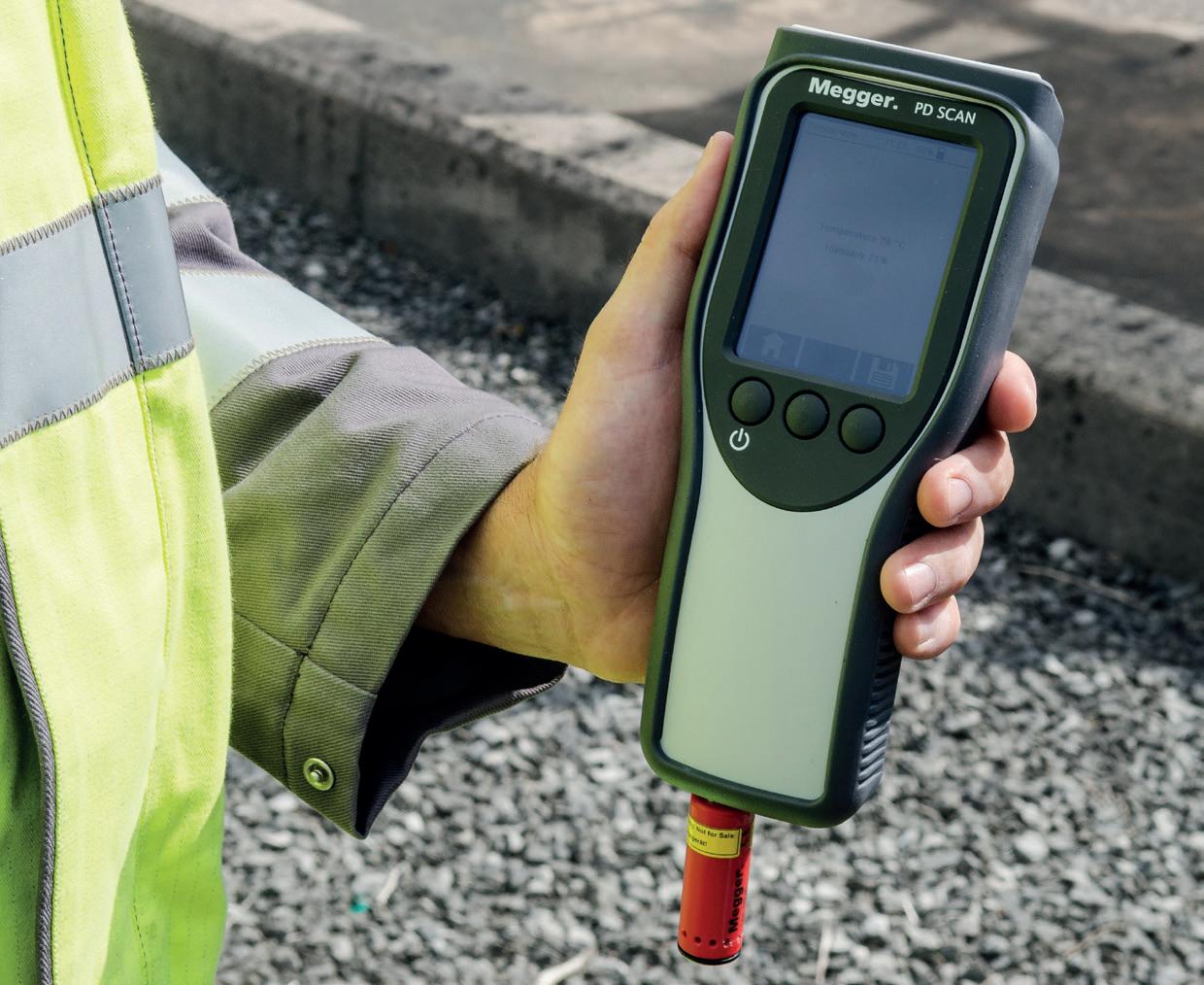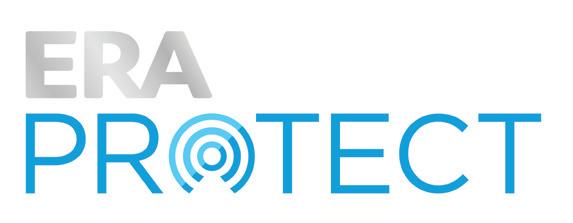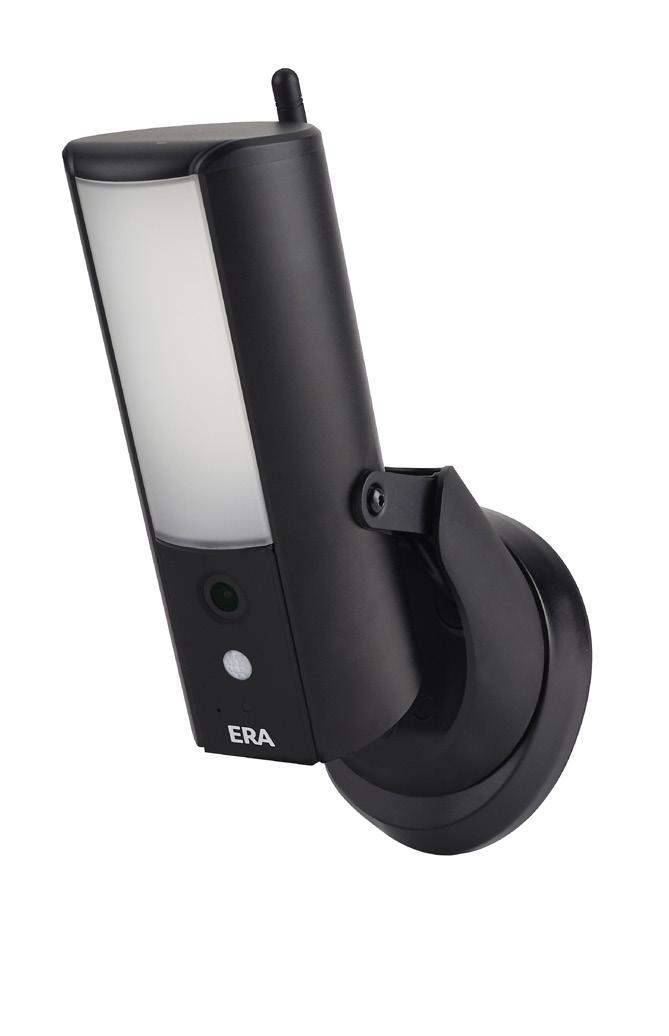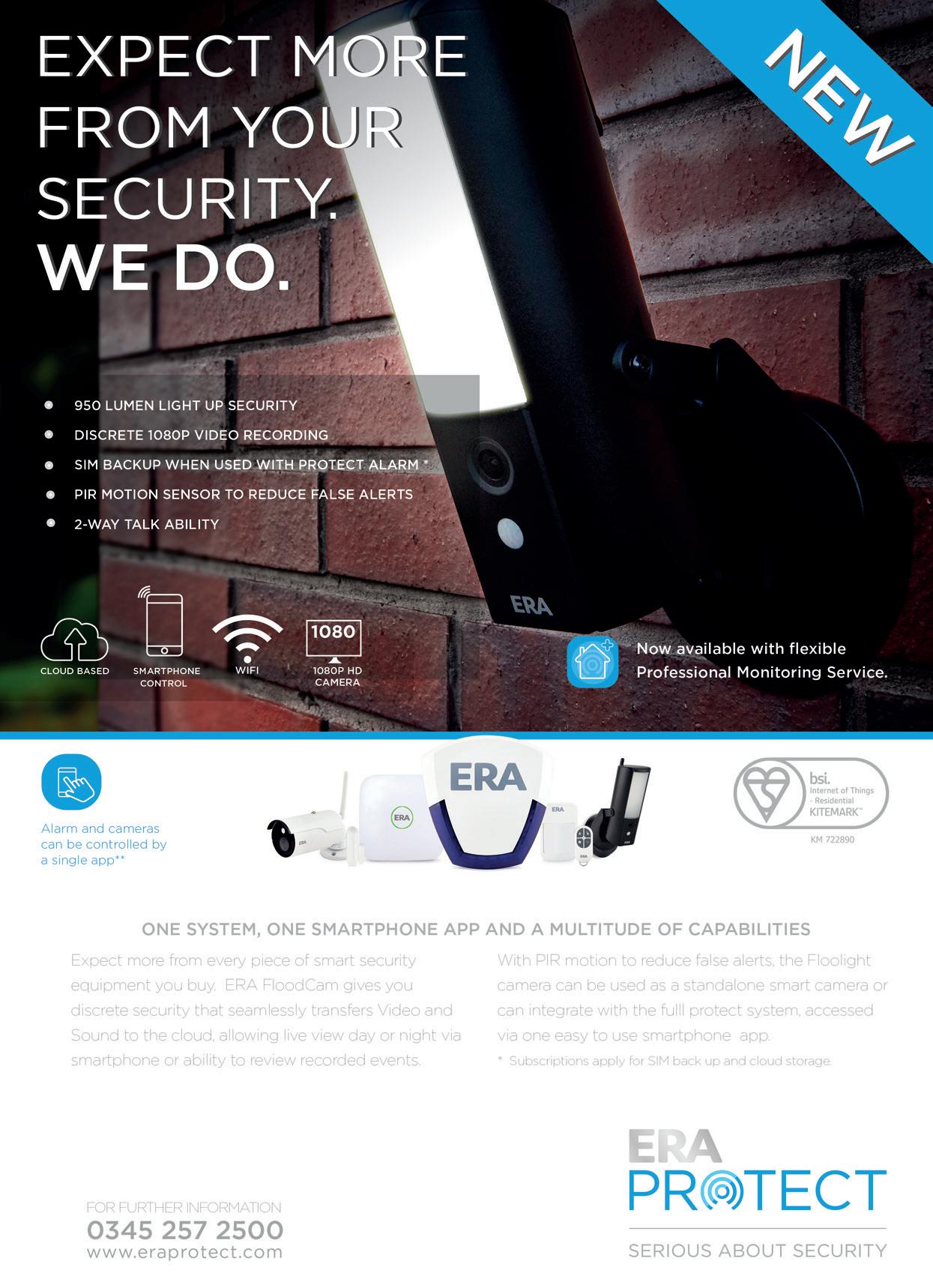
25 minute read
Gossage


Advertisement





Not lighting the way


At the start of this month the Government launched its ‘Green Homes grant scheme’. Over the next six months, £1.5 billion has been allocated to offer two-thirds of the costs of installing energy saving measures in the residential sector – worth up to £5,000 per household.


When in early July Chancellor Rishak announced the grants scheme, briefi ngs were sent out to all the media explaining what products would qualify. In that list, as reproduced endlessly – including in the Sun, the Mirror, the Express, the BBC website and, yes, also Electrical Review – was ‘energy effi cient lighting’.


But when one month later the Government issued its defi nitive list of qualifying products, there was no mention of anything to do with lighting. Why? The reason is simple. The overriding objective is to provide registered employment within the construction industry. Tens of thousands of new jobs will be delivered, according to Business Secretary Alok Sharma.

And that sadly means that one of the products that has already brought some of the greatest electricity savings of all, but has the potential to deliver so much more, has been unceremoniously disbarred from entry into the entire grants scheme. Although why lighting featured so prominently in the government’s initial eligibility list, is anybody’s guess. Perhaps the old joke should now become: how many civil servants does it take to change an offi cial scheme to exclude lightbulbs?
Lions, misled by donkeys
Does the electricity regulator Ofgem live in a different world to the rest of us? That seems to be the conclusion reached at the National Grid. The Grid, consistently one of the most impressively run parts of the electricity network, has told the regulator straight out that a signifi cant part of its ‘draft determination’, regarding the company’s proposed investment expenditure over the next fi ve years, is simply ‘unacceptable’. The Grid has a business plan committed to almost £10 billion of investment over the next fi ve-year RIIO-2 period, but this has to be approved by Ofgem. More than 50% of the proposed electricity network investment and around 40% of the proposed gas network investment has been disallowed in Ofgem’s ‘draft determination’. If such a complete watering-down of ambition is enforced, the regulator’s caution will seriously delay key investment needed for the government’s net zero transition, and will seriously impact upon the long-term resilience of the energy networks. According to the energy system operator, Ofgem instead proposes to subject a large part of the company to wasteful, additional, time-consuming future approvals processes. National Grid calculates the amount it can invest in electricity network reliability will have to be cut by 80%. It reckons the energy regulator’s proposals will increase the risk to network reliability and resilience by 24%, and estimates that the current approach would take around 100 years to replace important electricity network assets. All this would increase the risk both of scuppering the path to net zero carbon emissions, and of substantial outages particularly during severe weather events, according to the National Grid. And who will get the blame for these shortfalls? Sadly, not that dreary grey man running Ofgem, little Jonny Brearley.
Assembly point



In January 2020, over 100 randomly selected members of the public met in a secret location to begin taking part in the UK’s fi rst ‘climate assembly’. Lasting fi ve months, the assembly asked citizens to listen to advice from climate experts before coming up with a list of recommendations for how the country should reach net-zero emissions by 2050. Regarding electricity, there was extremely strong support for renewables – particularly offshore wind power. In other areas, however, support was somewhat lower, with assembly members expressing serious doubts over the costs and benefi ts both of nuclear and of bioenergy, as well as advocating for a conservative (small C!) approach to some cutting-edge clean technologies, such as carbon capture and storage (CCS) and direct air capture (DAC) systems. But above all, the assembly concluded that the most environmentally-friendly form of electricity occurred when its use was avoided. Well, who would have guessed it?

The long and winding road


Smack in the middle of this summer’s Covid-19 lockdown, Electricité de France decided to apply for formal permission to build its long-promised third nuclear power station at Sizewell in Suffolk. To be called, with stunning originality, Sizewell C. The company has been spending copious funds, running public exhibitions explaining to residents how they are going to be so super-effi cient that the new development would cost a mere £20 billion, making it a snip compared with its – years behind schedule – twin currently being constructed at Hinkley in Somerset.
Instead of holding more public meetings, the French fi rm decided to run a mobile-library bus, on which people could check out the latest propaganda. Alas, nobody thought to check whether local car parks could accommodate the bus (they couldn’t). So, the bus was taken initially to a lay-by just off one of the main roads in the county, where it soon became wedged fi rmly into the grass verge. It then needed a tow-truck surrounded by TV cameras to drag it out, blocking all traffi c either way for several hours.
The relevant highways authority is Suffolk County Council. Precisely the same local authority that has to grant planning permission. In the light of this much publicised debacle, it should have come as no surprise when the usually supine County Council decided on September 22 that it really could not give its backing to the proposals. And what reasons did the Council give for this thumbs down? Introducing the formal report, Suffolk’s Cabinet member for the environment and public protection, Richard Rout, complained that, “we remain very disappointed at EDF Energy’s transport strategy… we don’t believe it is a sustainable solution with its massive impact on local communities, with a much higher number of heavy goods vehicles taking to Suffolk’s roads than our existing infrastructure can handle.” Not to mention its lay-bys.



Work safer on medium voltage systems
When you work on medium voltage switchgear, your fi rst and overriding priority will always be to maximise safety. But what can you do to protect yourself against hidden hazards that are not readily apparent? Damon Mount of Megger looks into this issue and offers some useful suggestions.


If you’re professionally involved with MV switchgear, you’ll know that there are many ways in which it can fail. You’ll also know that the most common is insulation breakdown, and that the results can be catastrophic. Even a modest fault in an MV installation releases enough energy to wreck equipment and, if the circumstances are truly unfortunate, to kill. Which means that when you’re working with or even near MV equipment, you want to be as sure as you possibly can be that such a fault is not likely to occur.
Unfortunately, equipment that’s about to fail rarely gives you an advance warning. Or does it? In fact, insulation breakdowns are very oft en preceded by partial discharge (PD) events. If you can detect and monitor these events, you will, therefore, have a strong indication of equipment and cables that may soon fail. You can then investigate further and, if necessary, take the equipment out of service before a really serious problem develops.
At the very least, you’ll know that it’s a good idea to keep your distance from the suspect equipment if you want to stay safe. Th at’s reason enough for owners and operators of MV systems to insist that PD checks are always carried out on their equipment before any work takes place on or near it.
Th at’s all very well, but how do you carry out these surveys? Equipment to detect PD is nothing new but, for the most part, it has been designed not only to detect PD but also to investigate and characterise it. Th at’s excellent in its place, but the consequence of all this functionality is that the equipment requires skill to operate and to correctly interpret the results. Also, if you invest in this equipment, it will undoubtedly serve you well in demanding applications, but if you only intend to use it for MV switchgear surveys, you’ll be paying for a lot of features you’ll never use.
What you really need is a compact instrument – ideally handheld – that is very easy to use and that provides clear, unambiguous go/no-go results. You’ll need an instrument that works in a live environment, so that you don’t need to take equipment out of service to carry out your surveys. You won’t, however, need sophisticated functionality – you can always bring in other equipment when you want to investigate potential problems more fully – but you will need versatility, so that you can deploy the widest possible range of PD detection techniques. A PD detector can off er the versatility you need by employing multiple sensors – both internal and external – so let’s take a look at some of the possibilities.
You will fi nd an internal acoustic sensor – essentially a microphone that listens for the characteristic noise produced by partial discharges – is a good choice for PD testing on air-insulated MV switchgear and equipment that’s in direct line of sight. If you need more fl exibility in where you can place the sensor, you can achieve this by using an external acoustic sensor that connects to the detector via a cable.
For fully enclosed switchgear, you’ll want a contact probe that is sensitive to vibrations produced by partial discharge, while for switchgear where the components are not visually accessible – mostly vacuum and GIS equipment – an internal TEV (transient earth voltage) sensor will pick up RF radiation from the PD via the switchgear’s metallic enclosure. An external TEV sensor performs a similar function but will also help you to localise the PD source.
If you have a PD detector that allows you to connect an HFCT (high-frequency current transformer) sensor, this will usefully extend its functionality to include simple on-line PD surveying of MV cables. Finally, a parabolic acoustic sensor will let you carry out outdoor surveys to detect, for example, corona and surface discharge in terminations, CTs, PTs and isolators.
Let’s remember now that if you’re going to be routinely carrying out quick pre-work safety surveys, your PD detector must be fast and easy to use, so what should you need to do to confi gure it appropriately for the type of sensor in use? Th e answer is nothing. Th e detector should automatically set itself up for the type of internal sensor you select, or for the type of external sensor you plug in. Th is not only saves you time and trouble, but also makes it near impossible for you to make mistakes that might produce misleading results.
And what about those results? You may have heard – or even know from your own experience – that PD results can sometimes require skill and experience to interpret. But you don’t need that level of detail for a safety survey. So how about an instrument that provides you with ‘traffi c light’ results? Green for all is OK, amber for caution – consider investigating further, and red for danger – further investigation defi - nitely needed.
Of course, as you gain experience, you may well want to be able to alter the thresholds for amber and red indications to suit your own specifi c requirements, and you’ll almost defi nitely want a little more detail in the results so you can record and trend them. A phase-pattern PD display option will also be useful, as it provides a very useful way to distinguish between true partial discharge eff ects and random noise.
Hopefully by now you’re convinced of the benefi ts of routinely carrying out PD surveys on MV equipment, especially before you start work on or near it, and so you’ll be interested to know that a PD survey instrument that meets all of the requirements we’ve discussed has recently been introduced to the market. Th is is the new PD Scan from Megger.
In fact, this innovative device does rather more. It includes, for example, a camera that allows photographs to be easily attached to test reports, and which can also be used to read QR codes to identify equipment and documentation. It has a humidity and temperature sensor so that you can easily add these key parameters to your data, and there’s provision for you to download your results easily onto a PC and quickly generate comprehensive reports.
For all of its versatility and functionality, this instrument is as simple to use as a smartphone. It has just three buttons, and a large colour touchscreen that is intuitive in use and shows only those options you need to deal with the current operation, rather than forcing you to plough through a rat’s nest of complicated menus.
Every one of us in the electrical sector is constantly aware of the need for safe working, which is why many safety precautions are ‘baked’ into our routines: locking out circuits under test, for example, and grounding equipment that’s being worked on. Now the easy-to-use equipment discussed in this article provides us with the opportunity to adopt another safety routine: that of carrying out PD surveys before working on MV equipment. Th e process is fast, easy and non-disruptive; the results can save not just money, but lives.
Remote testing: The secret advantage
Chris O’Conor, regional VP, service provider sales at HUBER+SUHNER
Polatis, explains why remote testing can provide businesses with the edge they never knew they needed – until now.
Over the years, the term ‘service provider’ has come to encompass a broad range of organisations, from traditional wireless and wireline telephone companies to Multi-System CATV Operators (MSO) and data centre providers, including those in the hyperscale community.
With the scope of organisations expanding, so too are the types of services that they off er – but one thing that they have in common is that they all carry mission-critical data across their networks.
Built to the highest standard, these networks rely heavily on the verifi - cation and reliability of even the smallest components. By testing systems in a host of real-world confi gurations alongside performance measuring equipment, service providers can ensure that secure customer experience and high service quality are achieved.
Testing also allows providers to troubleshoot issues by simulating specifi c network conditions, or quickly alpha test new services and the eff ect they may have on the current network.
Testing requires the ability to quickly change most aspects of the network topology, but what happens when the test engineers are not able to work in the confi ned spaces of the network lab?
Automation is more important than ever Th e ongoing pandemic has taught us just how important it is for companies across all industries to have remote operation capability. Th is is particularly crucial for businesses that rely on new, certifi ed equipment for day-to-day activities, where a delay in testing could cause year-long delays in the deployment of new services.
The close confines of test laboratories make it difficult to comply with worldwide social distancing requirements, reducing accessibility for test lab engineers to manually patch each device, measure power readings and clean all fibres to the test equipment. This, in turn, impacts upon the testing of new devices prior to network deployment. The longer it takes to certify new equipment and services, the further away the goals for increased revenue and a competitive edge become.
What was once considered a luxury, could now be your greatest asset As networks migrate rapidly to line rates of 400 Gbps and beyond, more connected devices come online. As such, the industry pushes for Network Function Virtualisation (NFV) and Software Defined Networking (SDN), putting organisations under intense pressure to test and deliver enhanced network services.
With technology advancements and the industry moving towards a more virtualised environment, traditional network test labs will face added pressure. All SDN-enabled components will require re-certification to confirm interoperability in the new dynamic environment, and lab operators will need to adapt to meet these increasing demands.
In today’s ever-changing business climate, the automation of testing infrastructure and resources is vital to increase test capacity while reducing costs – enabling fast, repeatable and agile lab operations that are crucial to reducing time to market.
While lab automation is not a new concept, many have fallen short of its benefits due to lack of investment in personnel, resources or simply awareness in the company on the advantages that a well-run automated lab can bring.
The goal of a perfectly running network has driven providers to test all components before deployment – not just when introducing a new service or component, but also when first received from a vendor to confirm its individual performance compared to the specification. This results in a high number of tests and numerous cross connects.
Automated labs result in lower costs and reduced timescales In many organisations, the cross connect function is outsourced to a subcontractor or another group within the company, generating a chargeback. These charges often result in long wait times and, almost a third of the time, the resultant circuit is completed incorrectly, causing further delays.
With automation, labs can share expensive equipment and reconfigure tests remotely. Using readily available tools, resources can be shared securely between silos without conflict, allowing 24-hour global access to test equipment. Previously, this fight for resources would often interrupt testing and gridlock the schedule.
Problem resolution is also accelerated. An automated lab has an efficient method to cross connect any network component within minutes, rather than hours or days. This level of dynamic connectivity cuts down on network troubleshooting and resolves issues in a fraction of the time compared to the traditional method.
By adopting remote switching and related tools, lab engineers can reduce test times by 40% on the first run and close to 75% on repetitive tests, with zero manual intervention. Coupled with an ROI model of roughly 18 months, a switch which may seem initially expensive is easily justified when the reduction in staff or payments of subcontractor fees are considered – making a very compelling case for organisations to adopt a more automated approach in the future. Evolution is critical to the survival of test labs The move from a traditional to an automated lab environment is not as difficult as lab managers may think. Perhaps the biggest hurdle faced is the technological investment – making a partner in the CFO Office essential.
Though the costs associated with lab automation are usually not in the budget, the savings that they offer far outweigh the investment. The group also needs mindshare from the whole organisation to be successful; after all, when a company looks to implement an automated lab, it is likely to result in a reduction of staff or subcontractor fees.
Once these obstacles are overcome, there are several specialised software companies with a focus on providing Lab-as-a-Service solutions: choosing the right one for your company is key. These programmes create the environment that allows for reservations of lab resources, the running of test procedures and the documentation of test results.
A successful automated lab also requires a reliable all-optical fibre switch to provide the dynamic foundation for the lab network. A fibre switch allows the equipment cabling to be implemented just once, so all subsequent tests can be remotely configured on demand.
This one-time cabling installation protects lab results from potential fibre hygiene issues, creating more repeatable and reliable results. Working with the integration software, the switch provides partitioned testing environments, allowing multiple groups within a company to run tests simultaneously, saving time and money.
With the ability to be transparent to any optical speed, circuit type and wavelength, all-optical switching offers future-proofing to preserve the initial investment as line rates and transmission formats continue to advance.
The ‘new normal’ calls for preparation for the future With ongoing uncertainty about the continued impact on today’s work environment, the adoption of innovative solutions that allow remote testing orchestration has never been so critical. What was once considered a luxury, is now a requirement as the current situation emphasises the inherent need for remote lab management.
By adapting to a more automated lab environment, organisations can continue to operate as normal to ensure the timely completion of projects and leverage a geographically diverse workforce for a follow-the-sun approach to network service testing and development – allowing them to work across multiple test topologies simultaneously without concern for conflict.
Lab automation may be evolutionary to some companies and revolutionary to others, but the positive results are being seen in every sector of the service provider industry. Especially in the current work environment, such savings in time, money and personnel have created the ideal incubator for lab automation, and most service providers have either started or are about to commence this new way of working.
Staying home, staying safe

Darren Tonge, sales director at Hawkesworth, looks at the modern company’s obligations towards home working and whether PAT testing duties stretch to outside the office environment.
uring the peak of the coronavirus pandemic in June, 30% D of adults in the UK were working from home, with many still continuing to work outside the office environment. For example, Royal Bank of Scotland decided to allow 50,000 staff to work remotely until the start of 2021, with 50 of the biggest UK employers saying that they have no plans to return all staff to the office full-time in the near future.
The pandemic was the first taste of home working for countless people across the UK, and it has provided workers across a range of industries benefits, including less stress commuting, more flexibility and an improved work-life balance. According to Eskenzi PR, nine out of ten employees have expressed an interest in working remotely even once the pandemic is over.
However, just because employees are out of sight doesn’t mean that they should be out of mind. Regular health and safety requirements apply to all employees, whether they work in the office or at home, in line with The Health and Safety at Work Act (1974). This means that employers are liable if an employee injures themselves whilst working from home. The dangers of working from home One of the issues of working from home is that although employees are still bound by health and safety regulations, these regulations are much harder to enforce.
This is due to two key reasons. Firstly, staff working from home are not necessarily aware of the potential fire risks of working at home. Electrical Safety First surveyed 3,000 people at the start of lockdown and discovered that a third of employees were unaware of the potential fire risks of overloading plug sockets, an issue that would typically be quickly resolved in the office by the company QHSE team.
Secondly, employees do not have the same level of resources available to them that they would in the office. Given the rapid nature of how lockdown was enforced back in March, some employees had to make do with the resources they had at home, working from kitchen tables, sat on the sofa with a laptop on their knee, even using an ironing board as an impromptu desk.
Although these approaches resolved these problems temporarily, they were not without their hazards. Leaving appliances like laptops and
phones charging on a sofa, bed, or other flammable surfaces can increase the risk of household fires, especially if the charger or battery is faulty.
The Electricity at Work Regulations (1989) requires that any electrical equipment that could cause injury is maintained in a safe condition, ‘as may be necessary to prevent danger’.
The easiest way of reducing the risk of injury due to fire at home is to ask employees to carry out visual checks of their appliances (like monitors, extension leads and printers) to see if there is any damage such as frayed wires or damaged casing. However, this means businesses are wholly reliant on employees to determine if appliances are fit for use, and does not account for any internal damage.
PAT testing is the best way to ensure that printers, monitors and extension leads used, whether in the office or at home, are safe to use and will not pose a fire risk. Electrical appliance testing should be carried out by a ‘competent’ person, at a frequency appropriate to a businesses’ requirements.
PAT and WFH If staff are working from home, there are two ways that companies can carry out PAT testing.
Carry out PAT testing at an employee’s home
This is when a ‘competent person’ (ideally an engineer) visits an employee’s home to carry out PAT testing there. This can be more expensive as engineers have to travel to employee’s houses, but is a direct and effective way of ensuring compliance.
Staff may feel uneasy about having an engineer in their home, especially if they are concerned about coronavirus, but engineers can negate this risk considerably and reassure employees by wearing face coverings and using hand sanitiser.

Test appliances when staff attend the office
If staff need to attend site for a performance review or board meeting, they can bring their appliances to the office, leave them with an engineer and take them back home with them after the meeting.
This is a more cost-effective solution and allows engineers to test several pieces of equipment in one go, but it can be hard to coordinate, and requires staff to bring potentially heavy or cumbersome pieces of equipment into work.
In conclusion Homeworking has opened up a lot of opportunities for both employers and employees. With the risk of a second wave of coronavirus imminent, an increase in staff working from home could once again be likely.
It is the responsibility of the employer to keep staff safe from harm, wherever they are working. Even small steps like testing appliances can go a long way towards making employees feel happier and more productive, and most importantly, safer.


Brand new ERA Protect Floodlight Camera arrives
s part of the next generation of wireless smart home A security, ERA, the UK’s home security specialist, has introduced the ERA Protect Floodlight Camera. Accredited by the BSI IoT (British Standards Institute Internet of Things), the innovative Floodlight Camera is part of the new ERA Protect range, which also includes the Alarm and Outdoor Camera.
Working harmoniously together, the entire ERA Protect system is controlled via an intuitive smartphone app enabling users to access images of their property at any time from any location.
Discrete protection for your property Offering discrete security as it looks like a floodlight only with no indication that it also incorporates a camera, the ERA Protect Floodlight Camera is designed to work with the Alarm via the app, giving not only on-demand recording when in live view for instant recordings, but also allowing the user to check on and monitor their property at anytime from anywhere in the world.
Featuring high resolution 1080P HD for superior picture quality, the ERA Protect Floodlight Camera is hard-wired for extra protection.
Reassuringly, if the internet has failed and the Alarm has been triggered, thanks to the in-built Alarm SIM, data collected via the Floodlight Camera will still be recorded and stored directly to ERA’s GDPR-compliant UK-based cloud.
Further Floodlight Cameras, which are installed in such a way that protect cabling to avoid vandalism by intruders, can be added easily to the system at any time.
In addition, and unique for an affordable alarm system, a professional monitoring subscription is available. With the flexibility to opt in and out – use permanently or just when you are away on holiday for example – this feature brings real peace of mind to consumers.
Tania Tams, head of marketing at ERA said, “Innovative and robust, our ERA Protect Floodlight Camera holds the BSI IoT Kitemark, along with the other products within the range. ERA is the first company in the industry to attain this prestigious mark of quality.
“ERA Protect has been researched, designed and produced to the highest quality and has the well-known ERA commitment to service to back it up – welcome to the next generation.”
For further information on ERA’s brand new ERA Protect range of smart home security, visit www.eraeverywhere.com, email info@eraeverywhere.com or contact the sales team on 01922 490000.











